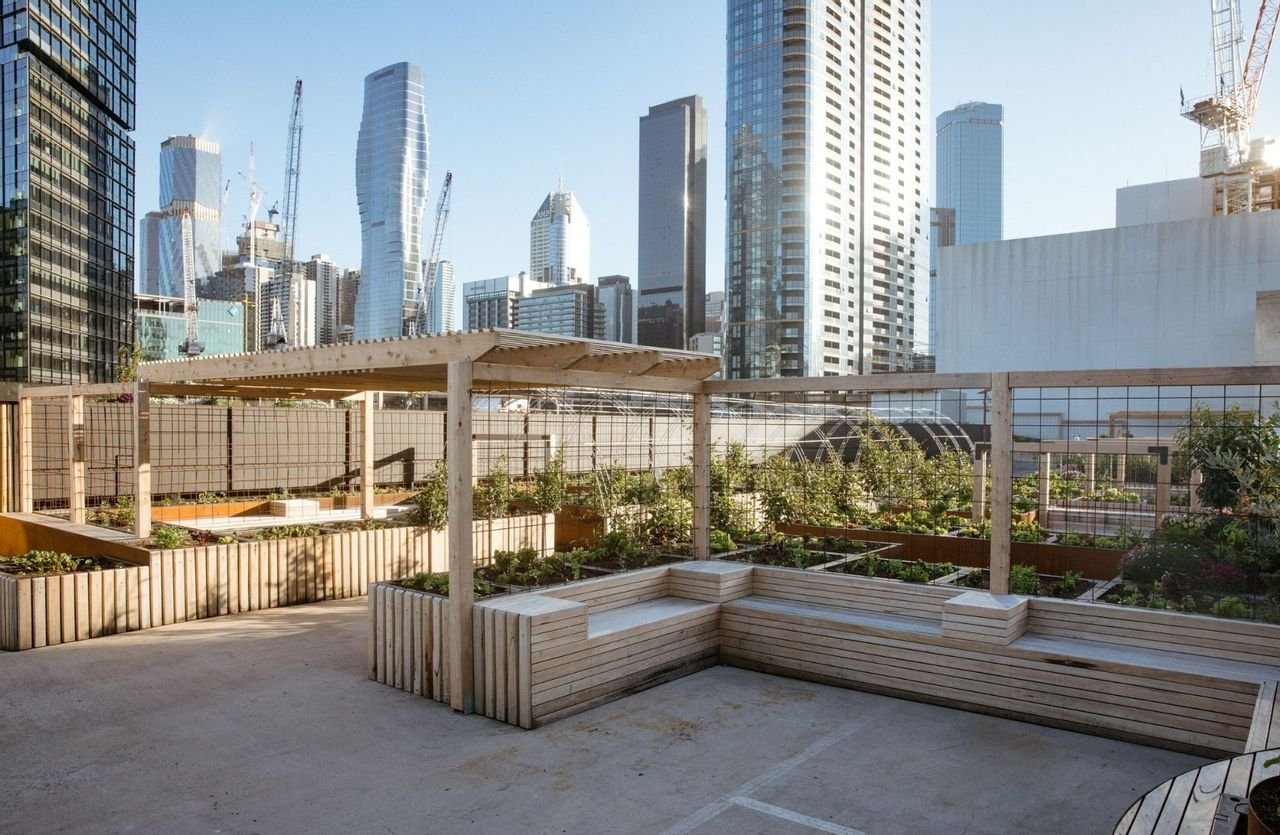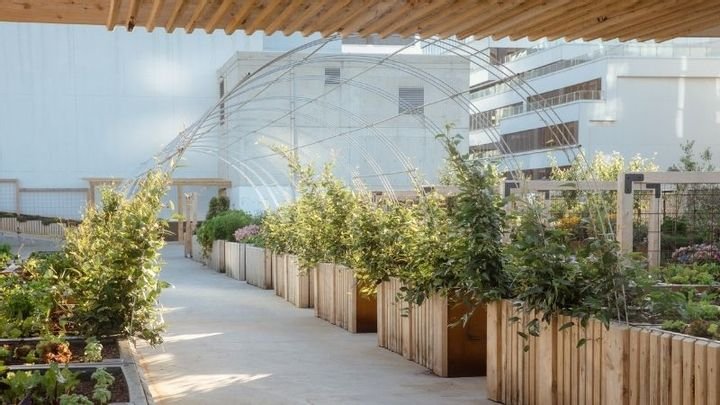Dec 8, 2021
Rooftop Car Park Becomes Skyfarm For Food Donation

Editor’s Note: It’s great to see cities convert grey spaces into urban oases to take on the growing concerns of food insecurity wherever possible. Such solutions will not only produce food for the community, but will also provide additional benefits like green space, increased biodiversity by supporting pollinators, rainwater harvesting, and more. Get started on designing your own urban farm TODAY with Agritecture Designer.
CONTENT SOURCED FROM THE URBAN DEVELOPER
Written by: Taryn Paris
A rooftop car park has been transformed into an urban farm in a Victorian-first to create a sustainable city oasis.
Skyfarm, when complete next year, will also include hospitality sites, environmental education and event spaces, and could produce up to 5 tonnes of fresh produce each year, most of which will be donated to food charity OzHarvest.
Overlooking the Seafarer’s precinct, the Melbourne Skyfarm has views of the Yarra River and Melbourne Convention and Exhibition Centre.
Melbourne Skyfarm director Brendan Condon said they aimed to demonstrate what was possible for sustainable cities embracing the future.
“We [want to] showcase Australian designed and manufactured urban farming systems to demonstrate the huge food growing potential that exists in cities if we harness good design, urban farming innovation and circular economy principles,” Condon said.

Melbourne Skyfarm will produce up to 5 tonnes of produce per annum, which will be donated to food charities.
“Skyfarm aims to transform a bare concrete carpark into a 2000sq m inner-city rooftop oasis and thriving urban farm where Melburnians can enjoy a meal, explore a beautiful landscape, have an engaging educational experience and find out about emerging solutions to environmental challenges.”
The City of Melbourne Urban Forest Fund provided a $300,000 seed grant alongside support from the Melbourne Convention and Exhibition Centre.
The first milestone is the completion of the urban greening and urban farming component of the farm, while the remainder is still under construction.
City of Melbourne mayor Sally Capp said the development would create a “green oasis in the heart of the city”.
“Through our Urban Forest Fund we committed $300,000 to support the delivery of the urban farm component of Skyfarm and we’re extremely proud of what Brendan Condon, and his team, has delivered,” Capp said.
“It has never been more important for us to invest in sustainable greening projects which engage our community, show innovative thinking and showcase how we can all work together to create an environmentally friendly and greener future for our city.”
The site is expected to host thousands of school students annually, who will participate in immersive education experiences on sustainable living, regenerative practices and protection, and restoration of nature.
City farms are growing in popularity in Australia as the size of backyards shrinks.
In Sydney, a former lawn bowls green at Camperdown has been converted into a farm that produces vegetables, herbs and salad greens, connecting people in urban areas with their food source.
A commercial tower rooftop at South Eveleigh has been transformed into a native rooftop farm, producing native bushfoods including finger lime and rosella.
Many globally significant cities, including Hong Kong, Paris and New York, where space is limited have turned to rooftop farming.


